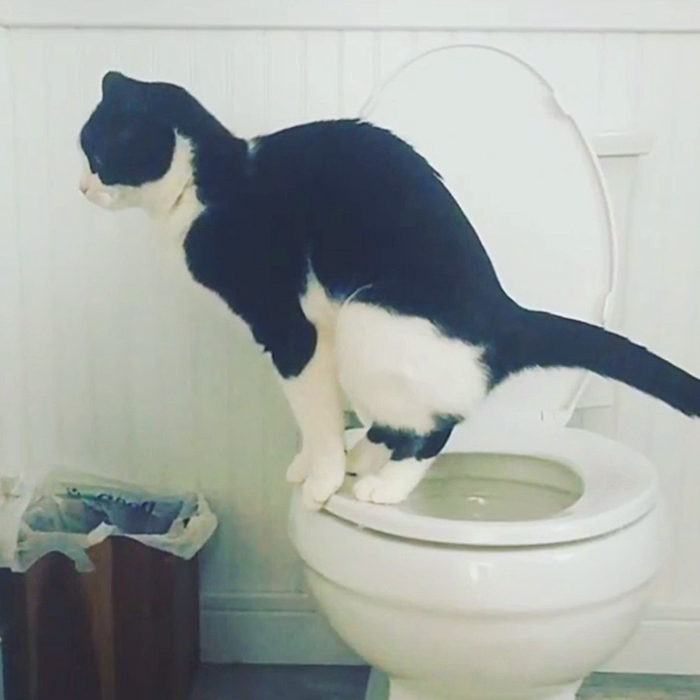Reasons You Should Never Flush Cat Poop Down Your Toilet - Important Facts
Reasons You Should Never Flush Cat Poop Down Your Toilet - Important Facts
Blog Article
Every person is bound to have their personal assumption on the subject of Don’t flush cat feces down the toilet.

Introduction
As cat owners, it's necessary to bear in mind how we deal with our feline buddies' waste. While it might seem convenient to purge pet cat poop down the bathroom, this practice can have harmful effects for both the environment and human health.
Ecological Impact
Flushing feline poop introduces unsafe microorganisms and bloodsuckers right into the supply of water, posturing a significant threat to aquatic communities. These impurities can negatively affect aquatic life and concession water quality.
Health and wellness Risks
Along with environmental worries, purging cat waste can likewise present health risks to people. Pet cat feces might contain Toxoplasma gondii, a parasite that can trigger toxoplasmosis-- a possibly severe disease, especially for expectant women and individuals with weakened immune systems.
Alternatives to Flushing
Luckily, there are more secure and more responsible ways to take care of cat poop. Consider the following alternatives:
1. Scoop and Dispose in Trash
The most typical technique of throwing away pet cat poop is to scoop it right into an eco-friendly bag and toss it in the trash. Be sure to use a devoted litter scoop and deal with the waste quickly.
2. Use Biodegradable Litter
Choose naturally degradable feline trash made from materials such as corn or wheat. These trashes are environmentally friendly and can be safely dealt with in the trash.
3. Bury in the Yard
If you have a backyard, take into consideration hiding feline waste in a marked location away from vegetable gardens and water sources. Be sure to dig deep adequate to stop contamination of groundwater.
4. Set Up a Pet Waste Disposal System
Invest in a pet waste disposal system specifically made for pet cat waste. These systems use enzymes to break down the waste, reducing smell and ecological effect.
Final thought
Accountable family pet possession prolongs past giving food and sanctuary-- it also involves appropriate waste administration. By refraining from flushing feline poop down the bathroom and selecting alternate disposal techniques, we can lessen our ecological impact and shield human wellness.
Why Can’t I Flush Cat Poop?
It Spreads a Parasite
Cats are frequently infected with a parasite called toxoplasma gondii. The parasite causes an infection called toxoplasmosis. It is usually harmless to cats. The parasite only uses cat poop as a host for its eggs. Otherwise, the cat’s immune system usually keeps the infection at low enough levels to maintain its own health. But it does not stop the develop of eggs. These eggs are tiny and surprisingly tough. They may survive for a year before they begin to grow. But that’s the problem.
Our wastewater system is not designed to deal with toxoplasmosis eggs. Instead, most eggs will flush from your toilet into sewers and wastewater management plants. After the sewage is treated for many other harmful things in it, it is typically released into local rivers, lakes, or oceans. Here, the toxoplasmosis eggs can find new hosts, including starfish, crabs, otters, and many other wildlife. For many, this is a significant risk to their health. Toxoplasmosis can also end up infecting water sources that are important for agriculture, which means our deer, pigs, and sheep can get infected too.
Is There Risk to Humans?
There can be a risk to human life from flushing cat poop down the toilet. If you do so, the parasites from your cat’s poop can end up in shellfish, game animals, or livestock. If this meat is then served raw or undercooked, the people who eat it can get sick.
In fact, according to the CDC, 40 million people in the United States are infected with toxoplasma gondii. They get it from exposure to infected seafood, or from some kind of cat poop contamination, like drinking from a stream that is contaminated or touching anything that has come into contact with cat poop. That includes just cleaning a cat litter box.
Most people who get infected with these parasites will not develop any symptoms. However, for pregnant women or for those with compromised immune systems, the parasite can cause severe health problems.
How to Handle Cat Poop
The best way to handle cat poop is actually to clean the box more often. The eggs that the parasite sheds will not become active until one to five days after the cat poops. That means that if you clean daily, you’re much less likely to come into direct contact with infectious eggs.
That said, always dispose of cat poop in the garbage and not down the toilet. Wash your hands before and after you clean the litter box, and bring the bag of poop right outside to your garbage bins.
https://trenchlesssolutionsusa.com/why-cant-i-flush-cat-poop/

We had been made aware of that article about Don’t flush cat feces down the toilet through a friend on our other blog. Remember to take the time to share this blog post if you liked it. I cherish reading our article about Can You Flush Cat Poo or Litter Down the Toilet?.
Click Here Report this page